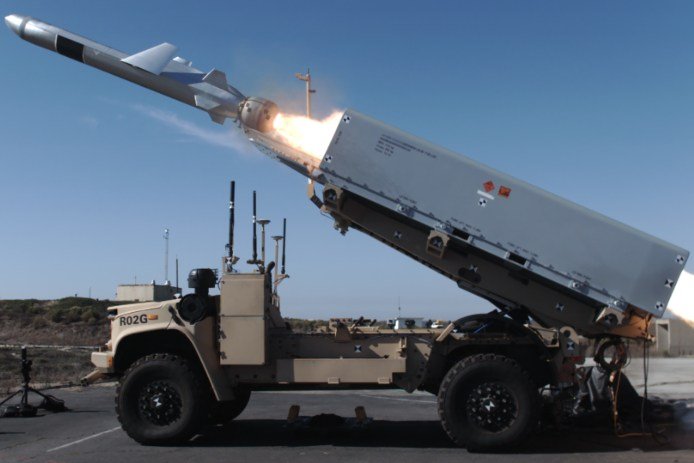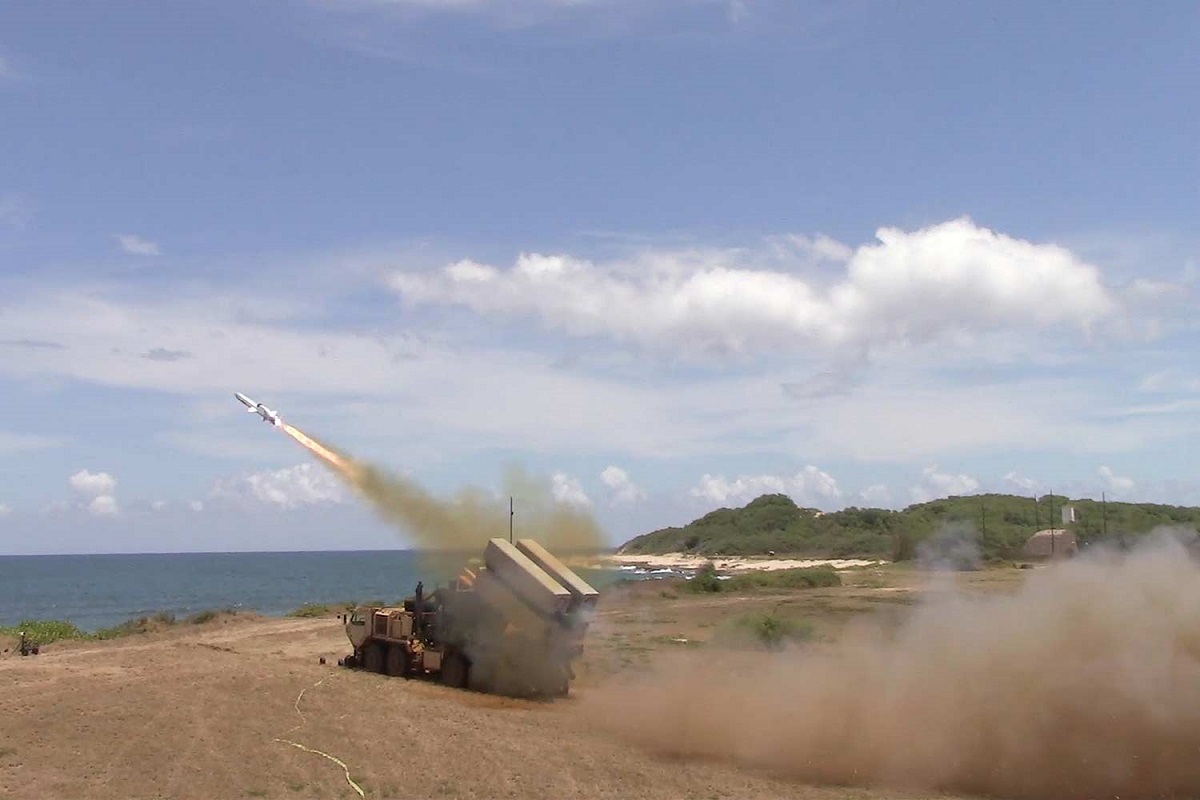The US Marine Corps (USMC) are rapidly moving to induct a new naval strike missile as part of the Ground-Based Anti-Ship Missile (GBASM) program, which can be used against Chinese warships.
This reduces the dependence on naval and air assets that are already vulnerable given China’s huge ‘home advantage’ and conversely, the US’ ‘away disadvantage’.
How Does It Work?
Part of the USMC’s Force Design 2030 doctrine, GBASM envisages basing small, nimble, and highly mobile teams undertaking ‘Long Range Fires’ at enemy assets, in a highly complex and networked combat environment.
The acquisition and the doctrine come amidst as the US struggles to adjust with unorthodox Chinese weapons systems and doctrines, that have left it blindsided.
The EurAsian Times had reported how the US military brass admitted before lawmakers that China’s ground-based ballistic missiles easily threatened American bases and Western Pacific.
Experts also warned how the Chinese Anti-Access/Area Denial (A2/AD) doctrine practiced through its missiles systems that simply outranged US systems, would not allow US Navy ships to get close and exploit their capacity/payload advantage, since the Chinese would fire first and from afar.

Another report talked about China’s evolution towards ‘Intelligenized War’ – a highly sophisticated form of ‘Network-Centric/Informationized War’.
Simply said, this lays emphasis on enhanced situational awareness across every airborne, sub-surface, surface, and terrestrial platform with what many believe is Beijing’s effort to fight at the ‘strategic level’.
Scarborough Shoal
The coral reef, roughly the size of Manhattan Island in New York, is about is 220 kilometers away from the nearest landmass of Luzon, the largest island of the Philippines. It is a disputed territory administered by the Philippines and claimed by both China and Taiwan.
Things got worse for the US when Philippines President Rodrigo Duterte had threatened to terminate the Visiting Forces Agreement (VFA) last year.
Not only would this have disallowed the US from using islands in the Scarborough Shoal under Manila’s control to conduct operations against China, but the South China Sea itself would also have gotten farther for the US, where it would have to travel southwards from its bases in Japan in the East China Sea.
However, Defense Secretary Llyod Austin’s visit to the Philippines managed to save the VFA, giving an impetus to the US Marine Corps Systems Command (MCSC) to set the ball rolling and give the finishing touches towards integrating the new weapons system and operational concept.
What Is NMESIS?
The Navy/Marine Corps Expeditionary Ship Interdiction System (NMESIS), part of the larger GBSM system, fires the naval strike missile and has a declared goal of complementing the naval expeditionary force’s “sea-control effort.”
Joe McPherson, Program Manager for Long Range Fires at the MCSC said, “Corps (is) bringing a ground-based solution (to) complicate the adversary’s ability to counter our anti-ship capabilities since ground-based launchers are hard to find.
NMESIS brings a launcher that is survivable inside the enemy’s weapons engagement zone.” This is because everything US’ “adversaries” (China) “developed over the last 20-30 years was intended to counter ships and aircraft,” McPherson added.
Survivability is ensured by a Remotely-Operated Ground Unit for Expeditionary Fires (ROGUE) built on a Joint Light Tactical Vehicle, which allows Marine crews to not be co-located with the launcher. This is in line with the US Marine Corps’ Force Design 2030 doctrine that was released in March 2020.
Countering Chinese Threat
The concept called for a requirement for “smaller, lower signature, and more affordable amphibious ships and a shortfall in affordable, distributable platforms that will enable littoral maneuver and provide logistical support in a very challenging theatre for the kind of operations envisioned in our current concepts”.
That it envisages operating, “within the range of adversary long-range fires; maneuver across the seaward and landward portions of complex littorals; and sense, shoot, and sustain while combining the physical and information domains…without the vulnerabilities of concentration, thanks to mobile and low-signature sensors and weapons,” shows the serious effort the US is mounting to overturn the doctrinal, technological and systemic surprises China sprang on it.

Depending entirely on surface warships and jets has long been a Chinese policy to make the US Navy vulnerable. The DF-21D (range 1,500 km) Anti-Ship Ballistic Missile (ASBM); the YJ-12 and YJ-18 Anti-Ship Cruise Missiles (500-600 km) and the PL-15 Beyond Visual Range air-to-air missiles outrange all US systems of their class.
Having physical control of some of the islands to strike PLAN assets changes the Chinese calculus since it would have additional land/littoral targets (which it may not necessarily) be able to destroy, while also having to aim at US sea and air targets (that would be working in tandem with land forces).
The NMESIS was first tested on August 15 this year during the Large Scale Exercise (LSE) by a Marine Littoral Regiment, where it “flew a non-linear route, around friendly and neutral shipping and other impediments between the ground-based firing position and the target.”
While NMESIS firing was not an official test since the system has not been inducted yet, it was rather aimed at receiving Marines’ feedback for future development of the missile.
The NMESIS will be tested with Marine Corps units over the next two years for extensive familiarization and receiving more feedback for improving it further. Induction is expected from 2023 onwards, with the first units reaching a Marine Littoral Regiment.
- Parth Satam is a Mumbai-based journalist who has been covering India’s defense sector for more than a decade. He maintains a keen interest in defense, aerospace and foreign affairs and can be reached at satamp@gmail.com
- Follow EurAsian Times on Google News




